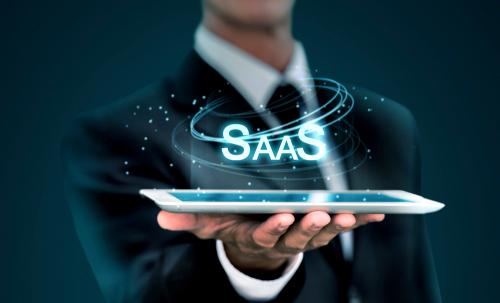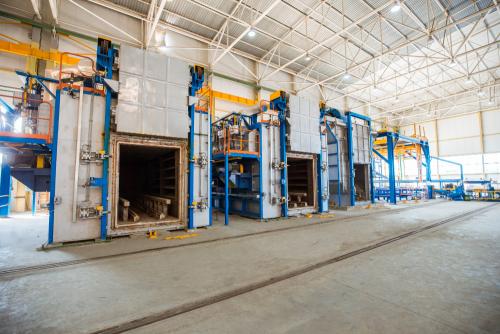Building the Perfect SaaS Tech Stack: Essential Tools and Technologies


Building a
successful Software as a Service (SaaS) product requires a robust and efficient
tech stack in today's fast-paced digital landscape. The right combination of
tools and technologies can improve your product's performance, scalability, and
user experience. This comprehensive guide will explore the essential components
of a SaaS tech stack and provide insights into selecting the best tools for
your needs.
Introduction to SaaS Tech Stacks
A SaaS tech
stack is a collection of technologies used to develop, deploy, and maintain a
SaaS application. It typically includes a combination of front-end and back-end
frameworks, databases, hosting platforms, and various third-party services. The
goal is to create a seamless, scalable, secure environment that delivers a
high-quality user experience.
Front-End Development
The front
end of a SaaS application is what users interact with directly. It includes
everything from the user interface (UI) to the user experience (UX). Key
technologies for front-end development include:
HTML, CSS, and JavaScript
- HTML5: The latest version of
HTML provides new features for structuring web content.
- CSS3: Offers advanced
styling options to create responsive and visually appealing designs.
- JavaScript: The core programming
language for web development, enabling dynamic and interactive user
interfaces.
Front-End Frameworks and Libraries
- React: Developed by
Facebook, React is a popular library for building user interfaces. It
offers a component-based architecture that promotes reusability and
efficiency.
- Vue.js: Known for its
simplicity and flexibility, Vue.js is a progressive framework for building
user interfaces.
- Angular: Google maintains
Angular as a full-fledged framework that provides robust tools for
building complex applications.
Back-End Development
The back
end of a SaaS application handles data processing, storage, and business logic.
It is crucial for ensuring the application's functionality and performance.
Essential back-end technologies include:
Programming Languages
- Node.js: A JavaScript runtime
that allows developers to use JavaScript for server-side scripting. It's
known for its scalability and performance.
- Python: A versatile language
with a simple syntax, making it a popular choice for web development.
Frameworks like Django and Flask are widely used to build robust back-end
systems.
- Ruby: Known for its elegant
syntax, Ruby, along with the Rails framework, is a powerful choice for
building scalable web applications.
Databases
- Relational Databases: SQL-based databases
like MySQL, PostgreSQL, and MariaDB are traditional choices for storing
structured data.
- NoSQL Databases: MongoDB, Cassandra,
and Redis are popular for handling unstructured data and providing high
scalability and performance.
Hosting and Cloud Platforms
Hosting is
a critical component of a SaaS tech stack, affecting the application's
performance, scalability, and availability. Cloud platforms provide a range of
services that simplify deployment and management. Key cloud platforms include:
- Amazon Web Services
(AWS):
Offers a comprehensive suite of services, including computing power,
storage, and databases. AWS is known for its scalability and reliability.
- Microsoft Azure: Provides a wide range
of cloud services and integrates seamlessly with Microsoft's ecosystem.
- Google Cloud Platform
(GCP):
Known for its powerful data analytics and machine learning capabilities,
GCP is a strong choice for data-driven applications.
APIs and Integrations
APIs
(Application Programming Interfaces) allow different software components to
communicate and work together. Integrating third-party services can enhance the
functionality of your SaaS application. Common integrations include:
- Payment Gateways: Stripe and PayPal
provide secure and easy-to-use payment processing services.
- Email Services: SendGrid and Mailgun
offer robust email delivery and management capabilities.
- Analytics: Google Analytics and
Mixpanel provide insights into user behavior and application performance.
DevOps and CI/CD
DevOps
practices and Continuous Integration/Continuous Deployment (CI/CD) pipelines
are essential for maintaining a high-quality SaaS application. These practices
ensure that code changes are tested, integrated, and deployed efficiently. Key
tools and technologies include:
- Version Control: Git and GitHub are
widely used for managing code repositories and collaboration.
- CI/CD Tools: Jenkins, CircleCI,
and Travis CI automate the process of testing and deploying code changes.
- Containerization: Docker and Kubernetes
enable the creation and management of containerized applications,
improving scalability and consistency.
Security and Compliance
Security is
paramount for SaaS applications, especially those handling sensitive data.
Implementing robust security measures and adhering to compliance standards is
crucial. Key practices include:
- Authentication and
Authorization:
Implementing secure authentication mechanisms, such as OAuth and JWT (JSON
Web Tokens), ensures that only authorized users can access your
application.
- Encryption: Encrypting data at
rest and in transit protects sensitive information from unauthorized
access.
- Compliance: Adhering to industry
standards and regulations, such as GDPR, HIPAA, and PCI-DSS, ensures your
application meets legal and security requirements.
Monitoring and Performance Optimization
Maintaining
optimal performance and availability requires continuous monitoring and
optimization. Essential tools and practices include:
- Application Performance
Monitoring (APM):
Tools like New Relic and Datadog provide real-time insights into
application performance and help identify bottlenecks.
- Logging: Centralized logging
solutions like ELK Stack (Elasticsearch, Logstash, Kibana) and Splunk help
track and analyze application logs.
- Caching: Implementing caching
strategies with Redis and Memcached improves response times and reduces
server load.
Conclusion
Building
the perfect SaaS tech stack involves selecting the right combination of tools
and technologies that align with your product's goals and requirements. You can
create a scalable, secure, and high-performing SaaS application by focusing on
essential components such as front-end and back-end development, hosting, APIs,
DevOps, security, and performance optimization.
Investing
time and effort into choosing the right tech stack will pay off in the long
run, ensuring that your SaaS product can meet the demands of users and stay
competitive in a rapidly evolving market.









Comments